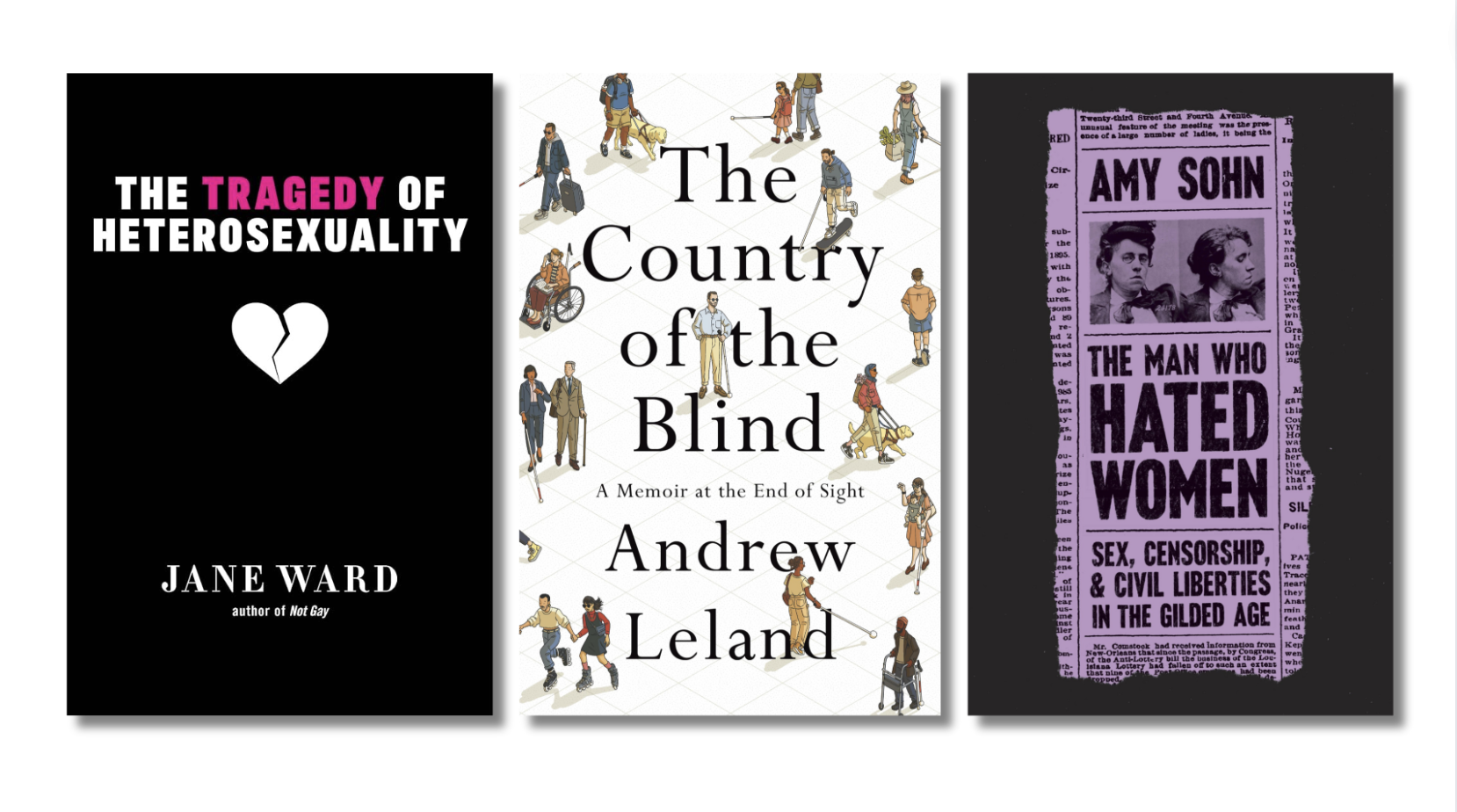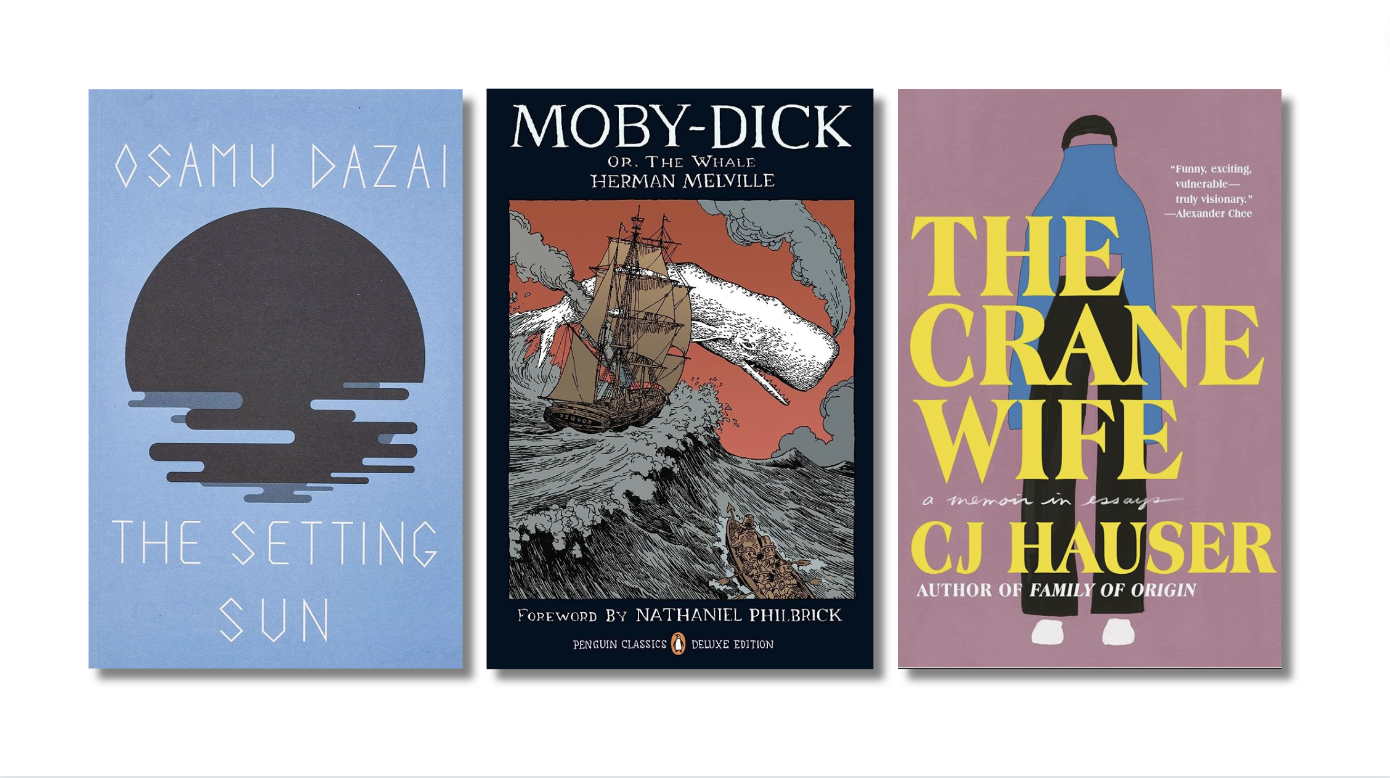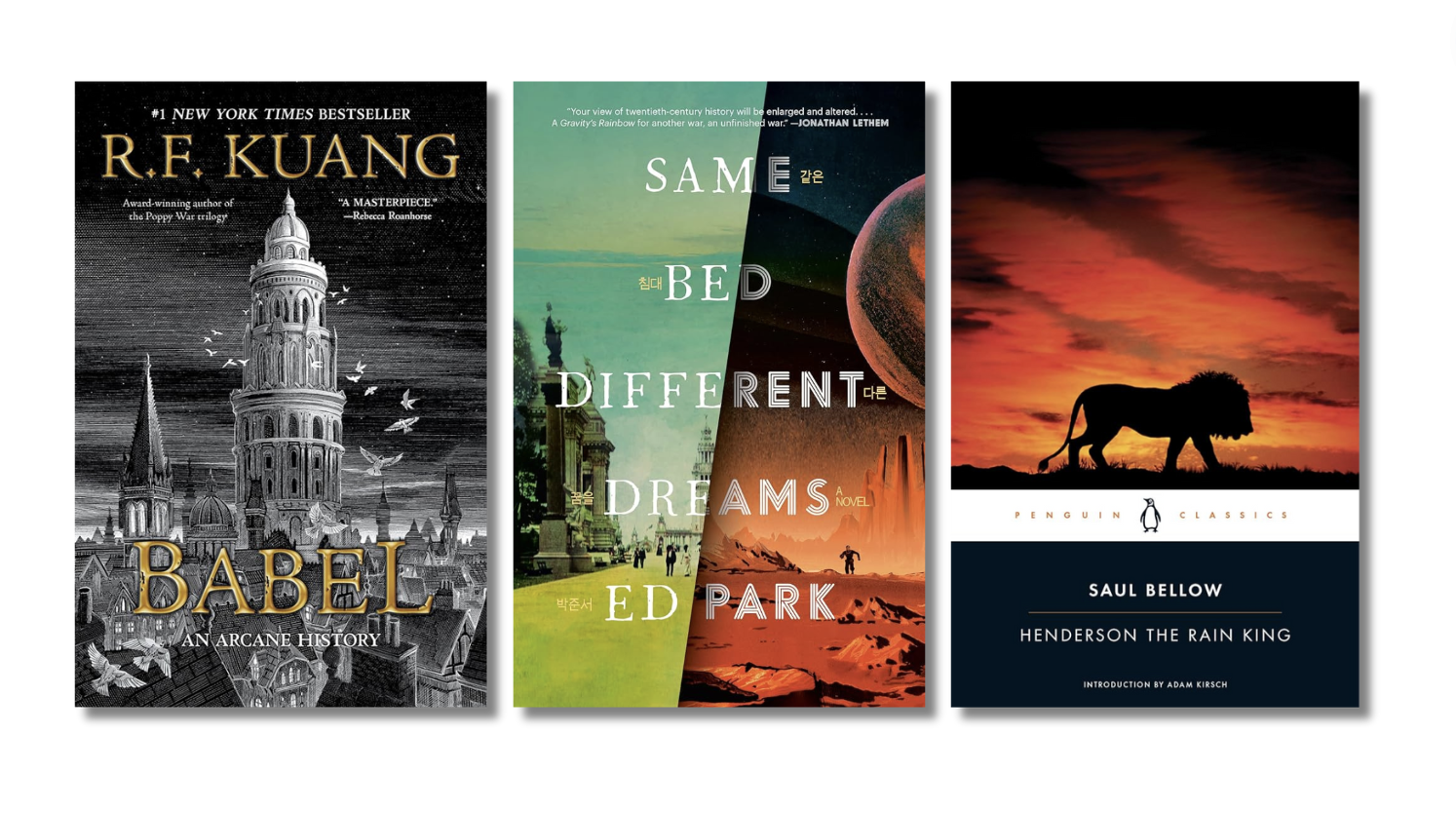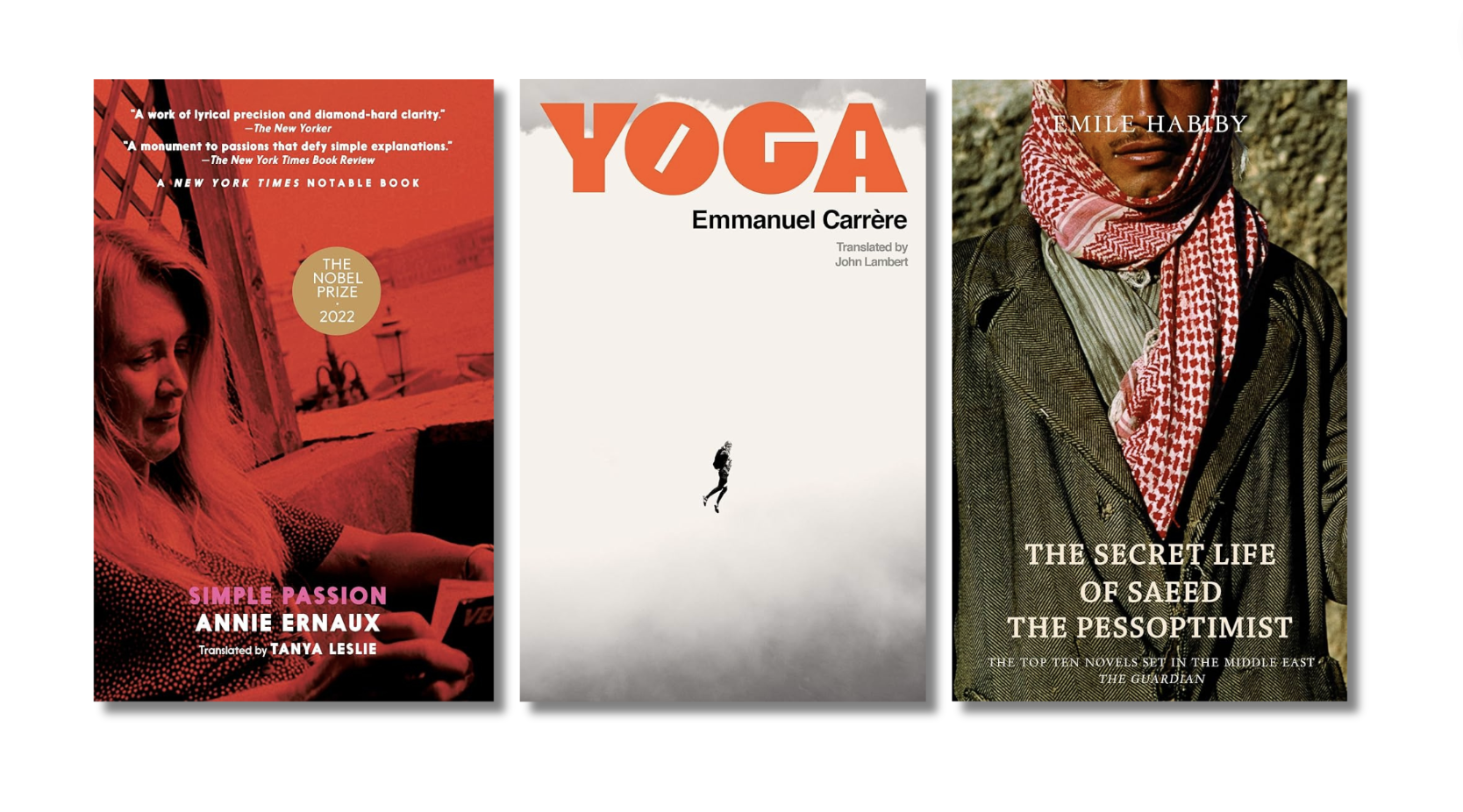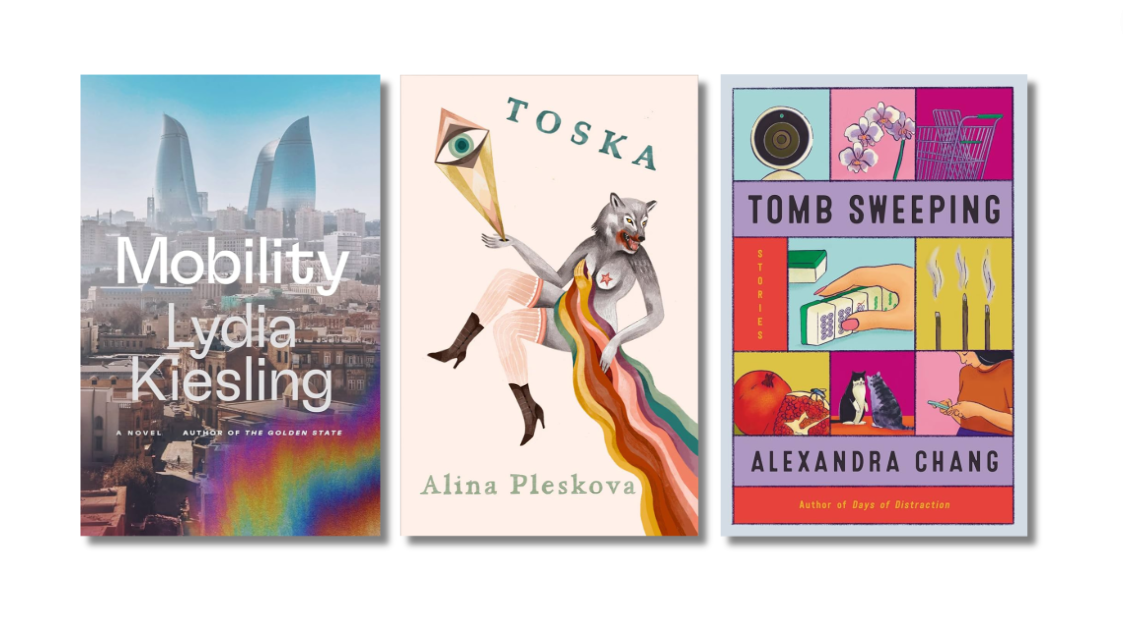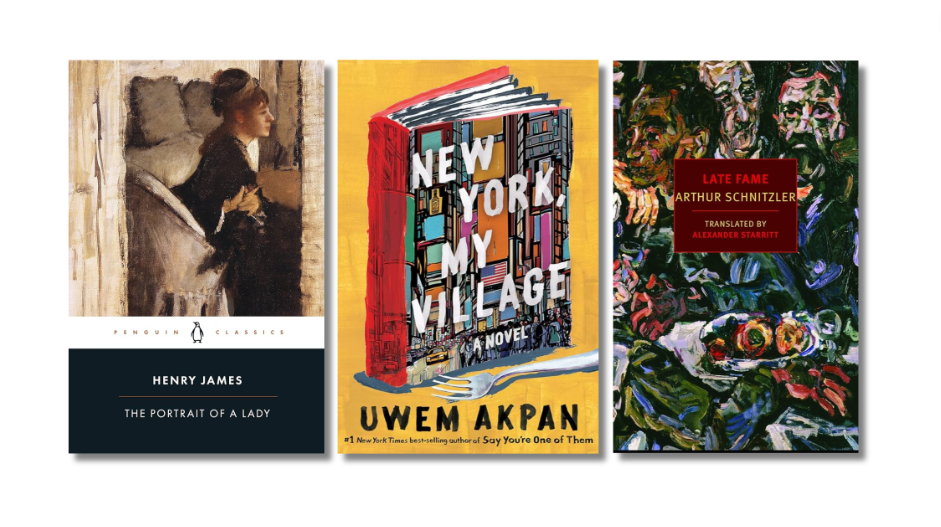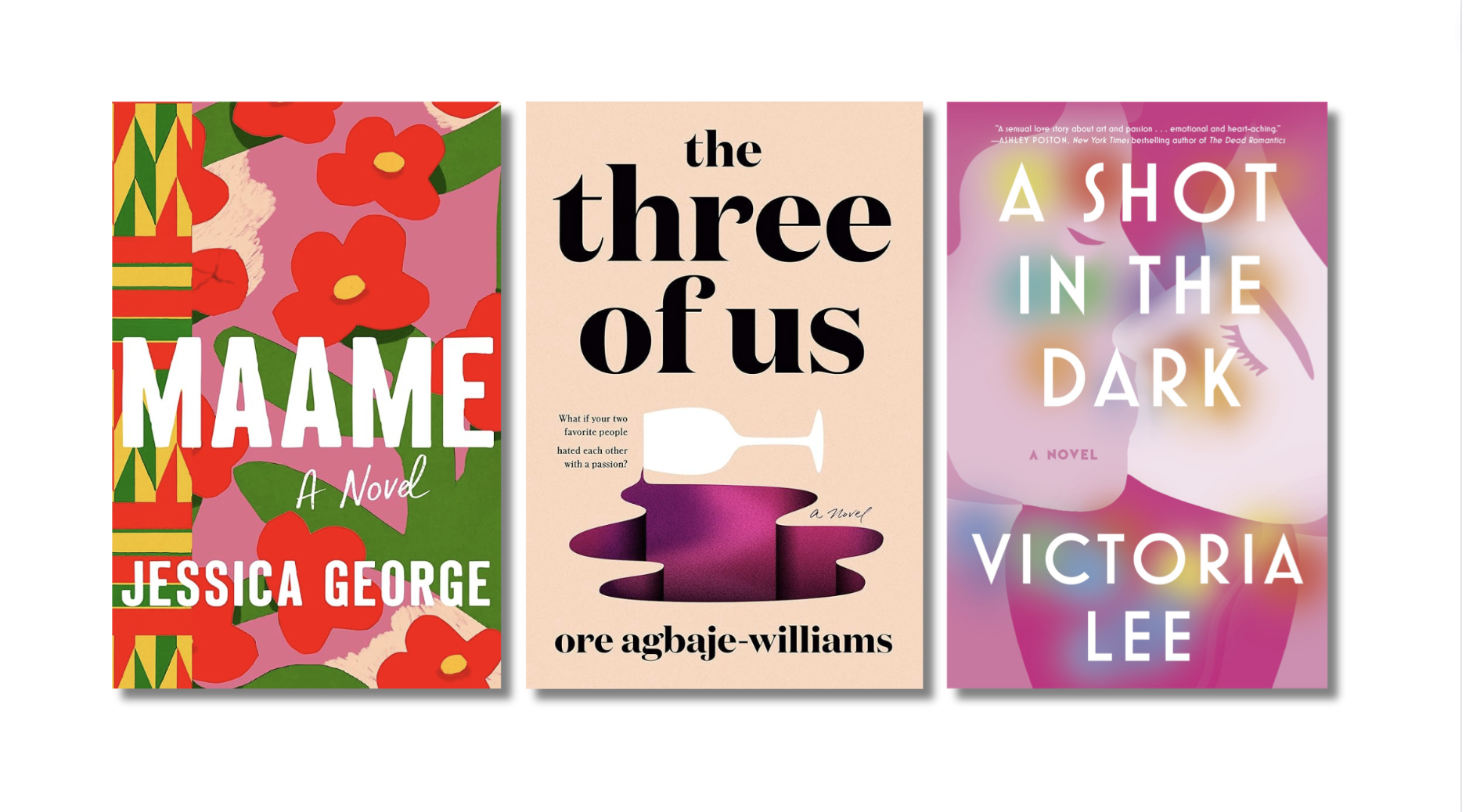Sometimes you just happen to be reading the right book—maybe it doesn’t happen as often as you’d like, but when it happens, oh my, it happens. But first let me say that in the middle of the Todd Haynes documentary about The Velvet Underground, which is really about trauma, at least for me, trauma and dissociation, trauma and dissociation and drugs, trauma and dissociation and drugs and feeling, and in the middle I had this profound feeling of loss, wondering, have I let go of the dream of a world of touch? That queer dream of desire activated in the everyday in every way, in spite of the world that annihilates these possibilities. I mean I went from finally having 50 percent of the touch I need in my life to 0 percent overnight when this new pandemic emerged almost two years ago, and now maybe I’m somewhere around 10 percent or maybe 15 percent on a good day but still the dream, how to stay present.
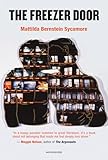 Before this pandemic, I wrote a book, The Freezer Door, about desire and its impossibility, the stranglehold of the suburban imagination over urban life, and the dream of the city as the place where you find everything and everyone that you never imagined, and whether this dream is still possible in our gentrified cities that foreclose possibility where we once found it. So when I first thought about this past year of reading, I thought about how the beginning of the year was the end of my book tour for The Freezer Door and how before the book tour started I thought, oh, I wrote a book about alienation, and then everything got worse. But what happened on my book tour is that I felt connected to everyone because we were all feeling this together, and even if the book tour was virtual there was so much intimacy present.
Before this pandemic, I wrote a book, The Freezer Door, about desire and its impossibility, the stranglehold of the suburban imagination over urban life, and the dream of the city as the place where you find everything and everyone that you never imagined, and whether this dream is still possible in our gentrified cities that foreclose possibility where we once found it. So when I first thought about this past year of reading, I thought about how the beginning of the year was the end of my book tour for The Freezer Door and how before the book tour started I thought, oh, I wrote a book about alienation, and then everything got worse. But what happened on my book tour is that I felt connected to everyone because we were all feeling this together, and even if the book tour was virtual there was so much intimacy present.
And now, in the push for back to normal in a world where normal was already a barely livable reality for so many of us, who gets crushed? I just keep thinking about all the missed opportunities to imagine and create a world where we move toward connection in deeper ways, and yet, here we are, back to all that violence of normal.
So then I’m reading Everybody by Olivia Laing and there’s this paragraph about her coming-of-age in Brighton, England, in the 1990s, a city known for “escapists and refuseniks, people infatuated with freedom,” and, though I’ve never been to Brighton, I’m thinking yes, my people, but actually I’m beyond thinking. The difference is this—when Laing writes of a “transient population of homeopaths, trance DJs, and kundalini yoga teachers,” I don’t stop to think about whether I actually like trance, or whether I have any interest in kundalini yoga, I just think yes. And especially the beach filled with partying Londoners “dressed for business in leather harnesses and fairy wings, their faces streaked with glitter, the whole seedy town throbbing to the pulse of sex”—I can hardly stop myself from crying at the end of that sentence, all the possibility and loss, do you feel it. Can we feel it together. This is what I want. Everybody.
If “herbal medicine is narrative medicine,” the narrative of this book pushes through history to find its pulse. Each investigation into the work of another thinker—Wilhelm Reich, Susan Sontag, Magnus Hirschfeld, Ana Mendieta, Andrew Dworkin, Angela Carter, to name a few—is not just an exploration of text or context but of a living, breathing, complicated relationship with bodies and bodies of work that can change and fail us. Change and fail, fail and change—the state of flux in a quest for freedom, accountability, ethical dreaming, and structural change. “Either you submit to the world or change the world,” Laing writes, and this book is about change, about asking “what it would be like to inhabit a body without fear.”
 Stroke Book, by Jonathan Alexander, another book about bodies, circles around the story of an eye stroke and its aftermath in the present of Alexander’s life. Telling and not telling, beginning and end and beginning, “the stress, the relief, the fear,” the joy of the mundane and the unexpected, how “Some of us learn to live with anxiety. I’m not sure I know how to live without it.” Moving through queer time in a body activated by loss, Alexander writes to us on the glass of the shower door: “What kind of future comes from having no more time for what you thought you wanted?”
Stroke Book, by Jonathan Alexander, another book about bodies, circles around the story of an eye stroke and its aftermath in the present of Alexander’s life. Telling and not telling, beginning and end and beginning, “the stress, the relief, the fear,” the joy of the mundane and the unexpected, how “Some of us learn to live with anxiety. I’m not sure I know how to live without it.” Moving through queer time in a body activated by loss, Alexander writes to us on the glass of the shower door: “What kind of future comes from having no more time for what you thought you wanted?”
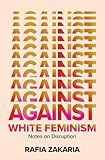 In Against White Feminism, Rafia Zakaria exposes the white savior complex rooted in European colonialism that persists in allegedly feminist organizing to this day. “Carrying forward the racial hierarchies of self-interested exploitation of the colonial era, white feminists have identified progress not as renouncing wars and empire but as competing with white men at the tasks of neo-imperialism,” Zakaria writes, rejecting the progress narrative of “[l]ate capitalism’s individualist reading of success” in favor of a rigorous accounting of the ongoing brutality of the imperialist project and how feminism has been co-opted as another tool for Western domination. Within this wide-ranging polemic, Zakaria also acknowledges her own vulnerability, her encounters with racist tokenism within allegedly feminist organizing, her coming into politics, and the errors that she’s made along the way—all of this deepens the text and spotlights her analysis. “No movement that is unable to do justice amongst its own adherents is likely to accomplish any wider goals toward justice.”
In Against White Feminism, Rafia Zakaria exposes the white savior complex rooted in European colonialism that persists in allegedly feminist organizing to this day. “Carrying forward the racial hierarchies of self-interested exploitation of the colonial era, white feminists have identified progress not as renouncing wars and empire but as competing with white men at the tasks of neo-imperialism,” Zakaria writes, rejecting the progress narrative of “[l]ate capitalism’s individualist reading of success” in favor of a rigorous accounting of the ongoing brutality of the imperialist project and how feminism has been co-opted as another tool for Western domination. Within this wide-ranging polemic, Zakaria also acknowledges her own vulnerability, her encounters with racist tokenism within allegedly feminist organizing, her coming into politics, and the errors that she’s made along the way—all of this deepens the text and spotlights her analysis. “No movement that is unable to do justice amongst its own adherents is likely to accomplish any wider goals toward justice.”
When I first thought about my year in reading, I somehow forgot the intense research I was doing for my next book, Touching the Art (which will be published by Soft Skull Press in 2023), and somewhere within drafts three, four, and five, I read dozens of books—honestly I didn’t know where to stop. I’ve stopped for now, since I turned the manuscript in, but I’m sure this is only temporary. I think it’s fair to say that for much of this year I was in a research vortex. Touching the Art investigates the legacy of my fraught relationship with my late grandmother, an abstract artist from Baltimore—as a child, she nurtured everything that made me different—my creativity, sensitivity, femininity, empathy, and imagination—but as an adult she tried to take all that back to get me to fit into the narrow path of upward mobility. The book circles around this abandonment while looking for my grandmother’s place within the trajectories of midcentury modernism and Abstract Expressionism, Jewish assimilation and white flight, intergenerational trauma and class striving—it’s about the possibilities of artistic striving, the limits of the middle-class mindset, and what art can and cannot provide.

 Maybe it’s not accurate to state that I was in a research vortex, when actually I think I went into several research vortexes. For example, after I realized that Billie Holiday was a contemporary of my grandmother’s who was raised in Baltimore until her early teenage years, I read her memoir, Lady Sings the Blues, and then I read six more books about her, and honestly I could read six more. The one I found most informative was With Billie: A New Look at the Unforgettable Lady Day by Julia Blackburn, which mostly consists of interviews with Holiday’s friends from childhood to adulthood. While Billie Holiday’s memoir is notorious for its half-truths and outright lies, what is consistent is her scathing indictment of the racism she encountered throughout her life, and her insights gave me a fuller picture of segregation in Baltimore in the 1920s and 1930s, and beyond.
Maybe it’s not accurate to state that I was in a research vortex, when actually I think I went into several research vortexes. For example, after I realized that Billie Holiday was a contemporary of my grandmother’s who was raised in Baltimore until her early teenage years, I read her memoir, Lady Sings the Blues, and then I read six more books about her, and honestly I could read six more. The one I found most informative was With Billie: A New Look at the Unforgettable Lady Day by Julia Blackburn, which mostly consists of interviews with Holiday’s friends from childhood to adulthood. While Billie Holiday’s memoir is notorious for its half-truths and outright lies, what is consistent is her scathing indictment of the racism she encountered throughout her life, and her insights gave me a fuller picture of segregation in Baltimore in the 1920s and 1930s, and beyond.
 In The Black Butterfly: The Harmful Politics of Race and Space in America, Lawrence T. Brown writes that “the Baltimore metropolitan area created the template for urban apartheid nationwide.” Brown maps this trajectory, from Baltimore’s role in the slave trade to the current-day legacy, where “Hypersegregation breeds hyperpolicing.” Brown offers the historical knowledge to reveal the interconnected legacies of white supremacy, colonialism, displacement, real estate speculation, and gentrification to indicate how “Baltimore Apartheid was erected and maintained by intentional public and private policies, practices, systems, and budgets. Therefore, it can be undone and dismantled by those very same means.”
In The Black Butterfly: The Harmful Politics of Race and Space in America, Lawrence T. Brown writes that “the Baltimore metropolitan area created the template for urban apartheid nationwide.” Brown maps this trajectory, from Baltimore’s role in the slave trade to the current-day legacy, where “Hypersegregation breeds hyperpolicing.” Brown offers the historical knowledge to reveal the interconnected legacies of white supremacy, colonialism, displacement, real estate speculation, and gentrification to indicate how “Baltimore Apartheid was erected and maintained by intentional public and private policies, practices, systems, and budgets. Therefore, it can be undone and dismantled by those very same means.”
 When I was living in Baltimore in 2018 while doing research for Touching the Art, I went to the Baltimore Museum of Art all the time, and the show I saw that moved me the most was Tomorrow Is Another Day, by Mark Bradford—these giant abstract works made of paper applied to canvas like paint. While there was no direct connection with my grandmother’s work, she did make a series of paintings over a number of years called Emotional Squares that reminded me of Mark Bradford’s Sirens on display at the museum. The Baltimore Museum of Art is a free museum, and so I wandered in and out all the time—the free museum is the museum that matters. I went to that show at least four or five times, and every time it moved me in a different way, abstraction as a way into the body.
When I was living in Baltimore in 2018 while doing research for Touching the Art, I went to the Baltimore Museum of Art all the time, and the show I saw that moved me the most was Tomorrow Is Another Day, by Mark Bradford—these giant abstract works made of paper applied to canvas like paint. While there was no direct connection with my grandmother’s work, she did make a series of paintings over a number of years called Emotional Squares that reminded me of Mark Bradford’s Sirens on display at the museum. The Baltimore Museum of Art is a free museum, and so I wandered in and out all the time—the free museum is the museum that matters. I went to that show at least four or five times, and every time it moved me in a different way, abstraction as a way into the body.

 In thinking about how the Baltimore neighborhood where my grandmother grew up was destroyed by white flight and disinvestment, I remembered that the title of Mark Bradford’s show drew from the last line of Gone with the Wind, the bestselling 1936 novel that romanticized the last days of the Confederacy, which was adapted into the highest grossing movie in U.S. history three years later. Bradford borrowed that line to indicate the unfinished project of Reconstruction, and I read through the catalog for that show, Mark Bradford: Tomorrow Is Another Day, edited by Katy Siegel and Christopher Bedford, and found so much analysis and inspiration that brought me to Black Reconstruction in America, W. E. B. DuBois’s crucial tome. Writing in 1935 about how workers around the world are “paid a wage below the level of decent living; driven, beaten, prisoned and enslaved in all but name,” he could easily be writing about today.
In thinking about how the Baltimore neighborhood where my grandmother grew up was destroyed by white flight and disinvestment, I remembered that the title of Mark Bradford’s show drew from the last line of Gone with the Wind, the bestselling 1936 novel that romanticized the last days of the Confederacy, which was adapted into the highest grossing movie in U.S. history three years later. Bradford borrowed that line to indicate the unfinished project of Reconstruction, and I read through the catalog for that show, Mark Bradford: Tomorrow Is Another Day, edited by Katy Siegel and Christopher Bedford, and found so much analysis and inspiration that brought me to Black Reconstruction in America, W. E. B. DuBois’s crucial tome. Writing in 1935 about how workers around the world are “paid a wage below the level of decent living; driven, beaten, prisoned and enslaved in all but name,” he could easily be writing about today.

 I also learned a lot from How the Suburbs Were Segregated: Developers and the Business of Exclusionary Housing, 1890-1960, by Paige Glotzer, who writes, “The postwar refinement of racial capitalism enabled the most well-known and politically powerful postwar developers to disavow racial inequality but perpetuate it as part of doing business.” And Come and Be Shocked: Baltimore Beyond John Waters and The Wire by Mary Rizzo, which asks, “Can art be a place of resistance, especially to urban policies that hurt working people and people of color?”
I also learned a lot from How the Suburbs Were Segregated: Developers and the Business of Exclusionary Housing, 1890-1960, by Paige Glotzer, who writes, “The postwar refinement of racial capitalism enabled the most well-known and politically powerful postwar developers to disavow racial inequality but perpetuate it as part of doing business.” And Come and Be Shocked: Baltimore Beyond John Waters and The Wire by Mary Rizzo, which asks, “Can art be a place of resistance, especially to urban policies that hurt working people and people of color?”
 In Image Control: Art, Fascism, and the Right to Resist, Patrick Nathan exposes the authoritarian underpinnings of presumed neutrality in art, photographic documentation, and memorials to underscore the importance of language as a tool for anti-fascist analysis. Elegantly weaving between art and literary criticism, historical and cultural commentary, Nathan offers a hybrid practice of resistance that blends philosophical investigation with an indictment of the ways consumerism, gentrification, and assimilation undermine the possibilities for challenging tyranny.
In Image Control: Art, Fascism, and the Right to Resist, Patrick Nathan exposes the authoritarian underpinnings of presumed neutrality in art, photographic documentation, and memorials to underscore the importance of language as a tool for anti-fascist analysis. Elegantly weaving between art and literary criticism, historical and cultural commentary, Nathan offers a hybrid practice of resistance that blends philosophical investigation with an indictment of the ways consumerism, gentrification, and assimilation undermine the possibilities for challenging tyranny.
 In Gentrifier, Anne Elizabeth Moore crafts an intimate portrait of self-determination and communal possibility in a resilient Detroit neighborhood—the structures of power and disinvestment in Detroit remind me so much of Baltimore. Yes, this book is about gentrification, but it is also about neighborhood sustainability, government corruption, nonprofit hypocrisy, chronic illness, gardening, girlhood, family, racism, education, misogyny, autonomy, queer striving, a writer’s life, and the elusive and ever-present search for home. It’s about trauma and laughter, and that space in between where you’re stuck.
In Gentrifier, Anne Elizabeth Moore crafts an intimate portrait of self-determination and communal possibility in a resilient Detroit neighborhood—the structures of power and disinvestment in Detroit remind me so much of Baltimore. Yes, this book is about gentrification, but it is also about neighborhood sustainability, government corruption, nonprofit hypocrisy, chronic illness, gardening, girlhood, family, racism, education, misogyny, autonomy, queer striving, a writer’s life, and the elusive and ever-present search for home. It’s about trauma and laughter, and that space in between where you’re stuck.
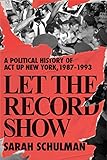 Then there’s Sarah Schulman’s Let the Record Show: A Political History of ACT UP New York, 1987-1993, an800-page people’s history of ACT UP that Schulman formed using as source material the nearly 200 interviews that she and Jim Hubbard conducted with members of ACT UP for the ACT UP Oral History Project, as well as her own memories as a “rank-and-file member” of ACT UP. Schulman offers a history of ACT UP New York that broadens the scope and deepens the analysis, telling the stories of as many people as possible rather than just a few familiar names. Dispensing with the myth of the lone hero in favor of a panoply of voices, bodies, and lives that formed—and continue to form—a culture of resistance, this book offers a corrective, but it also feels like an ongoing conversation.
Then there’s Sarah Schulman’s Let the Record Show: A Political History of ACT UP New York, 1987-1993, an800-page people’s history of ACT UP that Schulman formed using as source material the nearly 200 interviews that she and Jim Hubbard conducted with members of ACT UP for the ACT UP Oral History Project, as well as her own memories as a “rank-and-file member” of ACT UP. Schulman offers a history of ACT UP New York that broadens the scope and deepens the analysis, telling the stories of as many people as possible rather than just a few familiar names. Dispensing with the myth of the lone hero in favor of a panoply of voices, bodies, and lives that formed—and continue to form—a culture of resistance, this book offers a corrective, but it also feels like an ongoing conversation.
 In Waterbaby, Nikki Wallschlaeger writes, “If we’re all ‘just human’/ then who is responsible?” These poems demand accountability in everyday experience, in literature, in history, in bodily awareness, while also invoking laughter, frivolity, and spaciousness. To respond to a question with a question is a poet’s offering. A method of grieving. From a surreal intimacy to a candid philosophy of human relations, Wallschlaeger clears the air for more air—”When you keep repeating a lie/ people will accept it as truth.” But also, “I was unable to stand by myself, so I didn’t.”
In Waterbaby, Nikki Wallschlaeger writes, “If we’re all ‘just human’/ then who is responsible?” These poems demand accountability in everyday experience, in literature, in history, in bodily awareness, while also invoking laughter, frivolity, and spaciousness. To respond to a question with a question is a poet’s offering. A method of grieving. From a surreal intimacy to a candid philosophy of human relations, Wallschlaeger clears the air for more air—”When you keep repeating a lie/ people will accept it as truth.” But also, “I was unable to stand by myself, so I didn’t.”
And, wait: “Instead of crying on your shoulder I cry on the internet. Instead of crying I make allusions to crying by cherry-picking the subjects.” Is it a dream if the dream lets go? “No one cares about a past that’s supposed to be done.” If it lets us go. If we let it go. “When language fails me I look around./ Has language failed you, too?”
 “Before I knew how to write my own name,” Elissa Washuta writes, in White Magic, “I knew that women jump off cliffs to die.” Here she outlines the form of the book as it unravels from the structure she tries to impose. “Spoiler alert: at the end we are changed. We feel foolish or sad. Any narrative is a magic trick: the unfolding happens where you’re not looking.”
“Before I knew how to write my own name,” Elissa Washuta writes, in White Magic, “I knew that women jump off cliffs to die.” Here she outlines the form of the book as it unravels from the structure she tries to impose. “Spoiler alert: at the end we are changed. We feel foolish or sad. Any narrative is a magic trick: the unfolding happens where you’re not looking.”
“Borders are the flesh wounds of empire,” Washuta writes, as a Native woman facing misogynist violence intertwined with the colonialist imperative. She breaks open the trauma inside the memory to reveal the memory inside the trauma. “Why did it leave? The question of my heart. Where did it go? The boundary line of my imagination.”
In A Quilt for David, Steven Reigns tells the forgotten story of David Acer, a Florida dentist accused of infecting eight of his patients with HIV at the height of AIDS hysteria in the U.S. The most famous of these patients, Kimberly Bergalis, was portrayed by the media as an innocent victim, while Acer became the menacing gay dentist who somehow managed to infect eight people through routine dental procedures. Both Acer and Bergalis died of AIDS in the 1990s, as did most of the other accusers, but not before several of them received million-dollar insurance settlements from their spurious claims.
 A Quilt for David is a book of poems, and poetry by definition is built from the imagination, but Reigns hews to the established truth because there is so much mistruth already out there. Moving from interviews that he conducted with people who knew Acer, to newspaper reports, Congressional testimony, and his own investigative observations in Florida while working on the book, A Quilt for David assembles a tapestry of trauma that continues to this day. The book is almost clinical in its deceptive simplicity, moving through Acer’s life and the homophobia and AIDS-phobia of the time to assemble a narrative that recuperates Acer’s humanity.
A Quilt for David is a book of poems, and poetry by definition is built from the imagination, but Reigns hews to the established truth because there is so much mistruth already out there. Moving from interviews that he conducted with people who knew Acer, to newspaper reports, Congressional testimony, and his own investigative observations in Florida while working on the book, A Quilt for David assembles a tapestry of trauma that continues to this day. The book is almost clinical in its deceptive simplicity, moving through Acer’s life and the homophobia and AIDS-phobia of the time to assemble a narrative that recuperates Acer’s humanity.
 In The Monster I Am Today: Leontyne Price and a Life in Verse, Kevin Simmonds writes a heroic narrative of opera singer Leontyne Price, who used “technique as ladder” to the rarefied white worlds of elite opera stages. This book is a poetic invocation, a chorus, a collage, and a multifaceted inquiry into the possibilities of a creative life for Black artists in a white supremacist world. Simmonds reckons with his own coming-of-age as a Black queer singer inspired by Price to dream of entrancing audiences with his dynamic voice, while facing the enduring legacies of racism and homophobia that seek to dissuade him. Invoking a wide range of writers, singers, artists, and celebrities from James Baldwin to Ruth Bader Ginsburg, Marion Anderson to Alvin Ailey, and even including excerpts from Leontyne Price’s FBI file, Simmonds builds a momentum that conjures Price’s presence on stage and in the imagination, while also allowing her contradictions to emerge. With expert rhythm and modulation, Simmons forms a narrative for himself to express, with nuance and grace, the casual brutality of a world that still refuses to allow Black brilliance to flourish.
In The Monster I Am Today: Leontyne Price and a Life in Verse, Kevin Simmonds writes a heroic narrative of opera singer Leontyne Price, who used “technique as ladder” to the rarefied white worlds of elite opera stages. This book is a poetic invocation, a chorus, a collage, and a multifaceted inquiry into the possibilities of a creative life for Black artists in a white supremacist world. Simmonds reckons with his own coming-of-age as a Black queer singer inspired by Price to dream of entrancing audiences with his dynamic voice, while facing the enduring legacies of racism and homophobia that seek to dissuade him. Invoking a wide range of writers, singers, artists, and celebrities from James Baldwin to Ruth Bader Ginsburg, Marion Anderson to Alvin Ailey, and even including excerpts from Leontyne Price’s FBI file, Simmonds builds a momentum that conjures Price’s presence on stage and in the imagination, while also allowing her contradictions to emerge. With expert rhythm and modulation, Simmons forms a narrative for himself to express, with nuance and grace, the casual brutality of a world that still refuses to allow Black brilliance to flourish.
 In Love Is an Ex-Country, Randa Jarrar starts with a road trip in 2016—she’s documenting a country that might elect Donald Trump, while spotlighting her own formative memories of trauma and embodiment. With mesmerizing directness, she describes a childhood haunted by her father’s abuse, a young adulthood escaping abusive relationships, and the methods of her survival. “To be Arab in America,” Jarrar writes, “is to be a mouse unwittingly dumped into a paint pot of invisibility ink.” She refuses invisibility, and she also refuses the myths of Arab authenticity created by white stereotypes. “I wanted my own body to be my own body,” she declares, claiming her autonomy. “Maybe there is not a duality of the self, but a hexagonal? Maybe we have so many desires that we also have just as many selves?”
In Love Is an Ex-Country, Randa Jarrar starts with a road trip in 2016—she’s documenting a country that might elect Donald Trump, while spotlighting her own formative memories of trauma and embodiment. With mesmerizing directness, she describes a childhood haunted by her father’s abuse, a young adulthood escaping abusive relationships, and the methods of her survival. “To be Arab in America,” Jarrar writes, “is to be a mouse unwittingly dumped into a paint pot of invisibility ink.” She refuses invisibility, and she also refuses the myths of Arab authenticity created by white stereotypes. “I wanted my own body to be my own body,” she declares, claiming her autonomy. “Maybe there is not a duality of the self, but a hexagonal? Maybe we have so many desires that we also have just as many selves?”
 Speaking of legacies of desire, and self, and communal possibility, my new anthology, Between Certain Death and a Possible Future: Queer Writing on Growing Up with the AIDS Crisis, just came out, and one book that connects so deeply with this generational frame is Nate Lippens’s debut novel, where he writes, “Did we talk about our families? A little. We were queer and we were out on our own. It was obvious.”
Speaking of legacies of desire, and self, and communal possibility, my new anthology, Between Certain Death and a Possible Future: Queer Writing on Growing Up with the AIDS Crisis, just came out, and one book that connects so deeply with this generational frame is Nate Lippens’s debut novel, where he writes, “Did we talk about our families? A little. We were queer and we were out on our own. It was obvious.”
Lippens conjures the camaraderie of turning tricks and doing drugs and talking about all the missteps over the years, the losses and dreams and devastation, the turning into and turning away from, the living and loving and hating and dating, the fleeing and falling down and getting back up and coming together and apart, the not-knowing-where, the in-between, the everything-at-once and the nothing’s left. I’m gasping in recognition, holding my breath and holding on, the tears, the tears, the tears and the laughter.
The book starts with “My dead friends are back. I lie in bed at night and see them.” All these deaths from AIDS and addiction and suicide in the ruins of desire, the violence of childhood and family and nation and hollow notions of community that refuse to provide care. “Time doesn’t heal,” Lippens writes, “but my 4 a.m. comebacks to decades-old putdowns are stellar now.”
The pared-down vignettes that form My Dead Book cohere into a philosophy of loss. “Why do we live here?” Lippens writes. “I mean all of us and I mean anywhere.”
More from A Year in Reading 2021 (opens in a new tab)
Don’t miss: A Year in Reading 2020, 2019, 2018, 2017, 2016, 2015, 2014, 2013, 2012, 2011, 2010, 2009, 2008, 2007, 2006, 2005
















